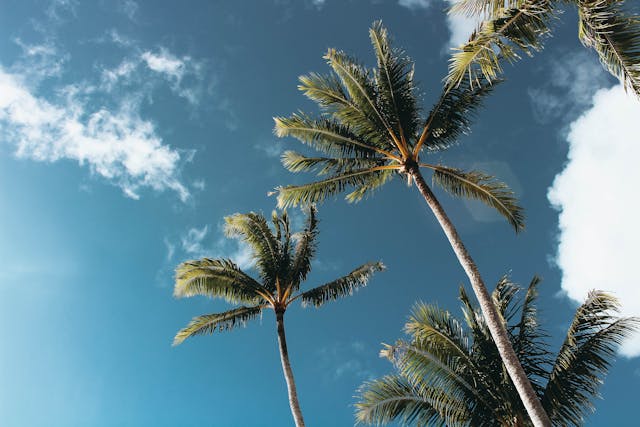
15 Surprising Facts About Palm Trees: Nature’s Tropical Marvels
Palm trees, with their distinctive silhouettes, are iconic symbols of tropical paradise. But these remarkable plants hold many secrets that go beyond their postcard-perfect image. Let’s explore 15 surprising facts about palm trees that will change the way you look at these botanical wonders.
1. Not All Palms Are Trees
Believe it or not, not all palms are technically trees. Many species are actually large shrubs or vines. The definition of a tree includes having a woody stem, branches, and leaves, which not all palms have.
2. They’re Ancient Plants
Palm trees are one of the oldest living plants on Earth. Fossil records show that palms have existed for about 80 million years, dating back to the Late Cretaceous period.
3. Palms Can Be Enormous
While many palms are of moderate size, some can grow incredibly tall. The Wax Palm of the Andes can reach heights of up to 200 feet (60 meters), making it the tallest palm in the world.
4. Some Palms Only Flower Once
Certain palm species, like the Talipot Palm, flower only once in their lifetime. After flowering and producing fruit, these palms die, a process known as monocarpic flowering.
5. Palms Are Incredibly Diverse
There are over 2,600 species of palm trees, ranging from desert-dwelling date palms to cold-hardy needle palms that can survive freezing temperatures.
6. They’re Not Just Tropical
While most palms are tropical or subtropical, some species can survive in much colder climates. The European Fan Palm, for instance, can withstand temperatures as low as 10°F (-12°C).
7. Palms Provide Valuable Resources
Beyond their aesthetic appeal, palms provide numerous resources. Coconut palms alone offer fruit, oil, wood, and fibers used in various products.
8. Some Palms Are Edible
The heart of some palm species, known as “heart of palm,” is edible and considered a delicacy in many cuisines. However, harvesting often kills the tree, making sustainable farming crucial.
9. Palms Have Unique Leaf Structures
Palm leaves, called fronds, are either palmate (fan-shaped) or pinnate (feather-shaped). This distinctive structure helps them withstand strong winds.
10. They’re Symbols in Many Cultures
Palms have significant cultural and religious symbolism. They represent victory, peace, and paradise in various traditions, including Christianity and Islam.
11. Palms Don’t Have Bark
Unlike most trees, palms don’t have bark. Instead, they have a fibrous stem made up of old leaf bases.
12. Some Palms Are Endangered
Due to habitat loss and over-harvesting, several palm species are endangered. The rarest palm tree, Hyophorbe amaricaulis, has only one known specimen left in the wild.
13. Palms Are Masters of Adaptation
Palm trees have adapted to a wide range of environments, from rainforests to deserts. Some, like the Nipa Palm, can even grow in saltwater.
14. They Have an Unusual Growth Pattern
Most palms grow from a single point at the top of the trunk called the apical meristem. Damage to this growing point can kill the entire tree.
15. Palms Play a Crucial Ecological Role
In their native habitats, palms provide food and shelter for numerous animal species, from insects to large mammals and birds.
From their ancient origins to their cultural significance, palm trees continue to fascinate and surprise us. Whether you’re lounging under one on a tropical beach or spotting a hardy specimen in a temperate garden, these incredible plants are more than just pretty scenery – they’re marvels of nature with stories to tell.
Next time you see a palm tree, take a moment to appreciate its unique features and the rich history it represents. These tropical icons are truly one of nature’s most remarkable creations.
You may also like
Calendar
| M | T | W | T | F | S | S |
|---|---|---|---|---|---|---|
| 1 | 2 | 3 | 4 | 5 | 6 | 7 |
| 8 | 9 | 10 | 11 | 12 | 13 | 14 |
| 15 | 16 | 17 | 18 | 19 | 20 | 21 |
| 22 | 23 | 24 | 25 | 26 | 27 | 28 |
| 29 | 30 | 31 | ||||